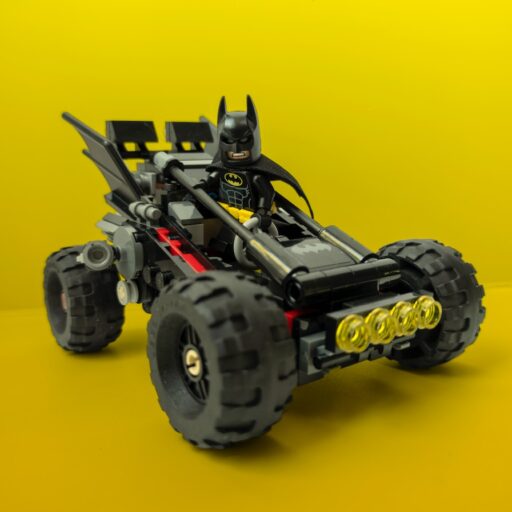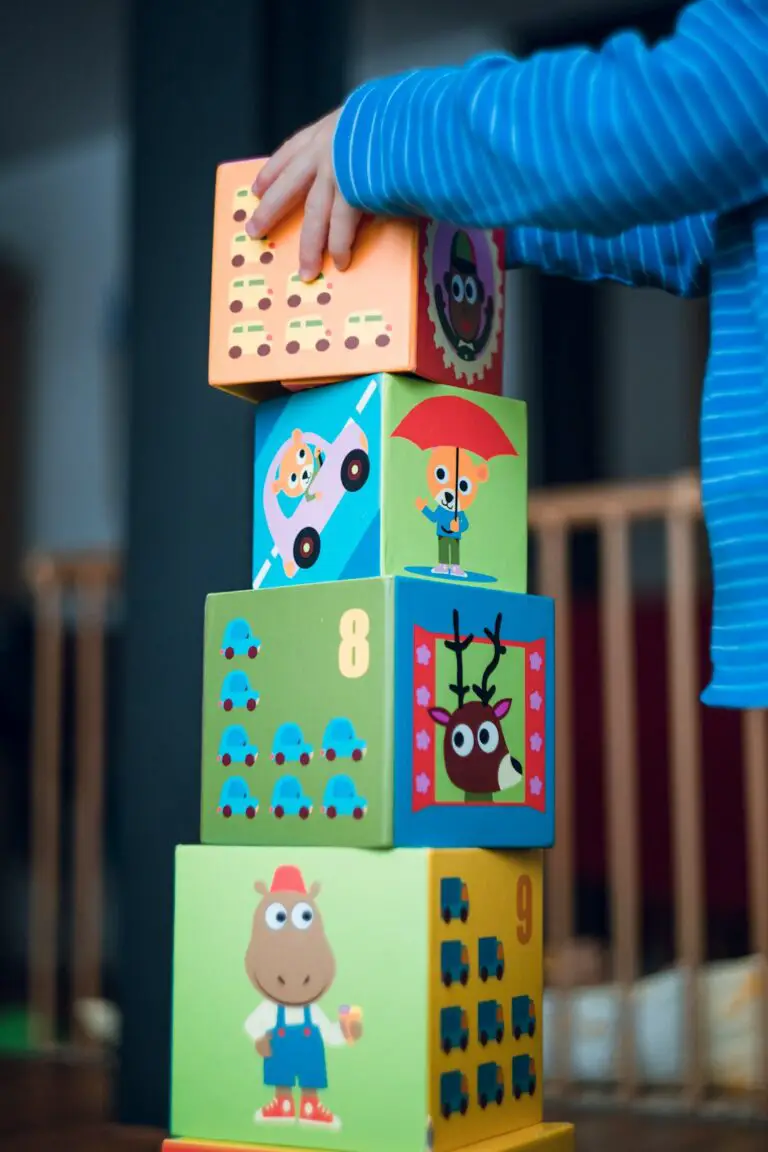Support our educational content for free when you purchase through links on our site. Learn more
Who Is the Number 1 Toy Company? Top 10 Giants of 2025 🎲
Ever wondered which toy company truly rules the playground in 2025? Is it the brick-building powerhouse LEGO, the iconic doll empire Mattel, or perhaps a surprise contender shaking up the industry? We dove deep into the world of toys to uncover who’s leading the pack—not just by sales, but by creativity, innovation, and sheer joy delivered to kids (and kidults!) worldwide.
From nostalgic classics like Barbie and Hot Wheels to the viral sensation of L.O.L. Surprise!, this article breaks down the top 10 toy companies you need to know. Plus, we reveal which brand is dominating the market right now and share expert tips on picking the perfect toys for your family. Ready to find out who’s number one? Keep reading—the answer might surprise you!
Key Takeaways
- LEGO remains the most valuable toy brand globally, celebrated for creativity and sustainability efforts.
- Mattel leads in market capitalization, powered by Barbie, Hot Wheels, and Fisher-Price.
- Bandai Namco and MGA Entertainment disrupt with anime and unboxing trends.
- Choosing the best toy depends on age, interests, and play style—our guide helps you decide.
- The future of toys blends physical and digital play, with sustainability and personalization at the forefront.
👉 Shop top brands now:
Table of Contents
- ⚡️ Quick Tips and Facts
- 🕰️ A Whirlwind Tour Through Toyland’s History: How the Giants Grew
- 🤔 Who Reigns Supreme? Unmasking the Number 1 Toy Company
- 🏆 Beyond the Billions: What Makes a Toy Company Truly Great?
- 💡 Choosing the Best Toys for Your Kids: A Parent’s Guide
- 📈 The Future of Play: Trends Shaping the Toy Industry
- ✅ Our Top Toy Recommendations: Tried, Tested, and Loved!
- 🔚 Conclusion: The Ever-Evolving World of Toys
- 🔗 Recommended Links: Dive Deeper into Toyland
- ❓ FAQ
- 📚 Reference Links: Our Sources
Body
⚡️ Quick Tips and Facts
Welcome, fellow toy enthusiasts! We’re the team of kids and parents at “Toy Brands™,” and we live and breathe toys. You’ve asked, “Who is the number 1 toy company?” and boy, is that a loaded question! It’s like asking a kid to pick their absolute favorite toy—tricky, right?
Here’s the lowdown in a nutshell:
- It’s a Tug-of-War: The top spot is a constant battle, primarily between The LEGO Group and Mattel.
- Two Ways to Measure #1:
- By Brand Value: For the tenth year running, LEGO is the world’s most valuable toy brand, with a brand value of nearly eight billion U.S. dollars in 2024. They are the undisputed heavyweight champion in this arena.
- By Revenue/Market Cap: This is where it gets spicy! As of September 2024, Mattel holds the top spot with a market capitalization of $6.35 billion. However, LEGO Group, a privately held company, reported a massive revenue of DKK 74.3 billion (approx. $10.7 billion USD) for 2024, showing incredible growth. Meanwhile, Bandai Namco often swoops in to claim the title of largest by revenue, depending on the year and what’s included.
- The “Kidult” Trend is Real: A huge driver of growth is the “kidult” market. That’s right, adults are buying toys for themselves! 73% of parents admit to buying toys for themselves, often to connect with their kids or relive childhood memories.
- Sustainability Matters: Toy companies are increasingly focusing on eco-friendly materials. Fisher-Price aims for sustainable toys by 2030, and LEGO is heavily investing in recycled and renewable materials.
- Licensed to Thrill: Toys tied to movies, video games, and TV shows are a massive part of the market, accounting for 35% of all global toy sales in the first half of 2025.
🕰️ A Whirlwind Tour Through Toyland’s History: How the Giants Grew
Ever wonder how these titans of the toy chest came to be? It wasn’t overnight! The story of toy companies is a fascinating journey of innovation, rivalry, and a little bit of magic.
It all started with simple, handcrafted playthings. Think about the timeless appeal of wooden blocks or a simple doll. Companies like Fisher-Price, founded in 1930, built their empire on durable wooden toys that sparked imagination. Then came the plastic revolution!
In 1932, a Danish carpenter named Ole Kirk Christiansen started a small company that would eventually become The LEGO Group. His interlocking plastic bricks changed the game forever, allowing for limitless creativity. Around the same time, in the United States, the Hassenfeld brothers founded a company in 1923 that would later be known as Hasbro, initially selling textile remnants and later school supplies before hitting it big with Mr. Potato Head.
The post-war boom saw the rise of another giant. In 1945, Mattel was founded, and in 1959, they introduced a doll that would become a cultural icon: Barbie. This wasn’t just a toy; it was a phenomenon that created a whole universe of fashion and storytelling.
The rivalries were legendary! The most famous, of course, was the “doll wars” between Mattel’s Barbie and MGA Entertainment’s Bratz in the early 2000s. Bratz, with their edgy fashion and oversized heads, were marketed as the “anti-Barbies” and even surpassed Barbie in sales for a time.
This history isn’t just about the big names, though. It’s also about the countless smaller creators and innovators who dreamed up the toys we love. In fact, some of the most exciting new toys come from 17 Small Toy Companies You’ll Love in 2025 🎲. The industry is a diverse ecosystem where, as one manufacturer puts it, “a lot of companies do a lot of things, some of them have even specialized their work to the point of taking over just one phase of production.” This means one company might design a toy, another will manufacture the parts, and a third will package it.
🤔 Who Reigns Supreme? Unmasking the Number 1 Toy Company
So, who gets the crown? 👑 As we teased, it’s complicated! You can’t just look at one number. It’s a clash of titans measured in different ways: brand value, revenue, and market capitalization.
- Brand Value: This is about reputation, recognition, and love. For a decade, LEGO has been the undisputed king here. Their brand is synonymous with creativity and quality, a legacy built brick by brick over decades.
- Revenue: This is the raw cash flowing in from sales. Here, the competition is fierce. Bandai Namco, with its massive portfolio of video games, anime, and toys, often leads the pack. However, LEGO’s recent financial reports show them pulling in staggering revenue, outpacing the market.
- Market Capitalization: For publicly traded companies, this is their total value on the stock market. As of late 2024, Mattel was leading its publicly-traded rivals like Spin Master and Funko.
It’s a fascinating dynamic! While one company might have the most beloved brand, another might be selling more products overall. And then you have disruptors like MGA Entertainment, a private company that, in some years, has reported revenues eclipsing its publicly-traded competitors, largely thanks to the “unboxing” craze fueled by their L.O.L. Surprise! dolls.
Looking back, it’s interesting to see how these rankings shift. The embedded video below, “Top 5 Best Toy Companies of 2017,” gives a snapshot from a few years ago. While the players are familiar, their positions have definitely shuffled!
📊 An Overview of the Top Toy Companies in 2025: By Brand Value & Market Share
Let’s break down the major players who are currently dominating the toy aisles and our living room floors. We’ve compiled this list based on the latest financial reports, brand value assessments, and our own expert analysis.
| Company | Key Brands | Why They’re a Titan | 2024/2025 Highlights |
|---|---|---|---|
| The LEGO Group | LEGO City, Star Wars, Icons, Harry Potter | Unmatched brand value, incredible global reach, master of the “system of play.” | Record revenue and profit in 2024, outpacing the toy market with 13% revenue growth. |
| Hasbro | Nerf, My Little Pony, Monopoly, Play-Doh, D&D | Master of board games and iconic brands with deep nostalgic roots. | Focusing on a “Fewer, Bigger, Better” strategy and growth in digital gaming like Monopoly Go!. |
| Mattel | Barbie, Hot Wheels, Fisher-Price, UNO | Home of the world’s most famous fashion doll and top-selling toy car. | Strong performance with Barbie and Hot Wheels, focusing on turning IP into entertainment. |
| Bandai Namco | Dragon Ball, Gundam, One Piece, Tamagotchi | A powerhouse in video games and anime-licensed toys. | Huge growth in video game profits, with franchises like Dragon Ball and One Piece driving sales. |
| MGA Entertainment | L.O.L. Surprise!, Bratz, Little Tikes, Miniverse | The king of surprise and unboxing trends, a master of viral marketing. | Miniverse predicted to be the #1 toy brand globally in 2024; planning a big launch with “Armorsaurs” in 2025. |
| Spin Master | PAW Patrol, Bakugan, Hatchimals, GUND | Canadian giant known for innovative tech toys and beloved preschool brands. | Second-largest toy company by market cap as of Sept. 2024. |
| Funko | Pop! Vinyl Figures | Dominates the Collectible Toys market with its massive range of pop culture licenses. | Third on the list of biggest toy companies by market cap. |
1. 🧱 The LEGO Group: Building Worlds, One Brick at a Time
It’s impossible to talk about toys without hailing the Danish king. For the tenth year in a row, LEGO is the world’s most valuable toy brand, and for good reason. They don’t just sell toys; they sell a system of creativity.
Toy Brands™ Rating:
- Creativity & Imagination: 10/10
- Quality & Durability: 10/10
- Play Value: 9/10
- Innovation: 9/10
From our family to yours, LEGO sets are a staple. I still remember the hours my son and I spent building the LEGO Ideas Tree House. It wasn’t just about following instructions; it was about the stories we created as we built. That’s the LEGO magic. They’ve masterfully expanded into movies, video games, and theme parks, creating a complete ecosystem. Their focus on Building Blocks and Sets is unparalleled.
Recent reports show LEGO is on a tear, with revenue up 13% in the first half of 2024, significantly outpacing the rest of the industry. They’re also leaders in sustainability, with a commitment to making their iconic bricks from plant-based and recycled sources. “The Lego manufacturing factory recycles all but 1% of plastic waste.”
✅ Pros:
- Incredibly high-quality and durable.
- Encourages creativity, problem-solving, and fine motor skills.
- Huge variety of themes for all ages and interests, including amazing STEM Toys.
❌ Cons:
- Can be on the pricier side.
- Stepping on a stray brick is a universal pain!
👉 Shop LEGO on: Amazon | Walmart | LEGO Official Website
2. ⚔️ Hasbro: Powering Play with Iconic Brands
Hasbro is the name behind so many childhood memories. They are the largest producer of board games on the planet and own a treasure trove of iconic brands.
While the company has faced some financial headwinds recently, with revenue declining in 2024, they are implementing a “Playing to Win” strategy to refocus on their core brands. A key part of this is expanding their digital and gaming division, with properties like Dungeons & Dragons and Magic: The Gathering being more profitable than their entire consumer products segment.
🔫 Nerf: Blasting Fun for All Ages
Is there anything more satisfying than a living room Nerf battle? We think not! Nerf, a Hasbro brand since the 90s, is the go-to for foam-based fun. Their blasters are a perfect example of Electronic Toys that get kids active.
✅ Pros:
- Promotes active play.
- Safe for indoor and outdoor fun.
- Wide range of blasters for different play styles.
❌ Cons:
- The darts. They get everywhere.
- Keeping track of batteries for motorized blasters.
👉 Shop Nerf on: Amazon | Walmart
🦄 My Little Pony: Friendship is Magic, and So Are the Toys!
From its debut in 1981, My Little Pony has been a beacon of friendship and color. Hasbro has brilliantly reinvented the brand for new generations, with engaging shows and toys that capture the hearts of kids and adult collectors (“bronies”).
✅ Pros:
- Promotes themes of friendship and kindness.
- Colorful and imaginative designs.
- Strong appeal for collectors.
❌ Cons:
- Some playsets have many small pieces.
👉 Shop My Little Pony on: Amazon | Walmart
3. 🎀 Mattel: Crafting Childhood Dreams
Mattel is a true giant, and as of September 2024, the biggest toy company by market cap. Their portfolio is legendary, boasting some of the most successful toy lines in history. Their strategy of turning their beloved IP into blockbuster movies (hello, Barbie!) has paid off handsomely.
💖 Barbie: More Than Just a Doll
Barbie is not just a toy; she’s a cultural institution. With over a billion dolls sold, she is Mattel’s most profitable and popular product line. “The brand Barbie has spread its product offerings to include video games and CGI films.” What we love about modern Barbie is her evolution. The brand has made huge strides in diversity and inclusivity, offering dolls with different body types, skin tones, and abilities.
✅ Pros:
- Encourages imaginative storytelling and role-playing.
- Incredibly diverse and inclusive range of dolls.
- A massive world of accessories and playsets.
❌ Cons:
- The sheer volume of accessories can be overwhelming (and easy to lose!).
👉 Shop Barbie on: Amazon | Walmart
🏎️ Hot Wheels: Racing into Hearts
For over 50 years, Hot Wheels has been the king of die-cast cars. It was named the “Top-Selling Global Toy of the Year” in both 2020 and 2021 for a reason. The appeal is simple: cool cars, fast tracks, and endless fun. The Hot Wheels Singles 1:64 Assortment was even named the Global Top Selling Toy of the Year for 2024.
✅ Pros:
- Affordable and highly collectible.
- Promotes competitive and imaginative play.
- Awesome track sets that can be combined for epic layouts.
❌ Cons:
- You’ll end up with hundreds of them. It’s inevitable.
👉 Shop Hot Wheels on: Amazon | Walmart
👶 Fisher-Price: Nurturing Little Learners
A wholly-owned subsidiary of Mattel, Fisher-Price is the undisputed leader in toys for the little ones. They are masters of creating Educational Toys that are both fun and foundational for development. From the classic Rock-a-Stack to the Kick & Play Piano Gym, these are the toys that help babies and toddlers reach their first milestones.
✅ Pros:
- Excellent for early childhood development.
- Durable and designed with safety first.
- Trusted by parents for generations.
❌ Cons:
- Kids outgrow them relatively quickly (but they have great resale value!).
👉 Shop Fisher-Price on: Amazon | Walmart
4. 🐉 Bandai Namco Holdings: Anime, Games, and Toys Galore!
This Japanese conglomerate is a titan of entertainment, and their toy division is a force to be reckoned with. They are the second most valuable toy brand in the world. Their strength lies in leveraging their immensely popular video game and anime franchises into must-have toys and collectibles.
💥 Dragon Ball: Unleashing Saiyan Power
As one of the highest-grossing media franchises of all time, Dragon Ball’s popularity is immense. Bandai Namco has capitalized on this with an incredible line of action figures, model kits, and card games that fans can’t get enough of. The level of detail in their S.H.Figuarts line is something our resident collectors obsess over.
✅ Pros:
- High-quality, detailed figures perfect for collectors.
- Deep connection to a beloved global franchise.
- Engaging model kits and card games extend the play.
❌ Cons:
- Some collectible figures can be expensive and hard to find.
👉 Shop Dragon Ball Toys on: Amazon | Walmart
5. 🌟 MGA Entertainment: Innovating with LOL Surprise! and Bratz
Never underestimate the underdog! MGA Entertainment, led by the dynamic Isaac Larian, is a private company that consistently disrupts the industry. Larian himself notes, “MGA has been known in the toy industry as being the interrupter with new, original innovations for the past three decades.” Their genius lies in tapping into trends before anyone else.
They practically invented the modern “unboxing” phenomenon with L.O.L. Surprise!. The layered packaging and mystery reveals were perfectly designed for the YouTube generation. As Larian’s competitor noted after seeing the trend, “I thought people were crazy, frankly, for doing that. Then I typed, ‘toy unboxing.'” MGA is now predicting their Miniverse line will be the No. 1 toy brand globally.
✅ Pros:
- Masters of the surprise/unboxing trend.
- Brands like L.O.L. Surprise! and Rainbow High are incredibly popular.
- Not afraid to take risks and innovate.
❌ Cons:
- The “surprise” element means you can get duplicates.
- Lots of small plastic pieces and packaging.
👉 Shop MGA Brands on: Amazon | Walmart
6. 🤖 Spin Master: From Paw Patrol to Bakugan
This Canadian company has a knack for creating hits. From the preschool juggernaut PAW Patrol to the innovative transforming spheres of Bakugan, Spin Master blends engaging characters with cool toy technology. They are the second-largest toy company by market capitalization, a testament to their consistent success.
✅ Pros:
- Strong portfolio of beloved preschool brands.
- Innovative toy mechanics (Hatchimals, Bakugan).
- Owns the classic GUND plush toy brand.
❌ Cons:
- Some of the tech-heavy toys can be prone to malfunctioning.
👉 Shop Spin Master on: Amazon | Walmart
7. 🎨 Pop Mart: The Art of Collectible Blind Boxes
A fast-growing star from China, Pop Mart has turned the blind box into an art form. They collaborate with artists to create unique and highly sought-after collectible figures. The thrill of the unknown combined with beautiful designs has created a massive global following.
✅ Pros:
- Beautifully designed, high-quality collectible figures.
- The “blind box” element adds excitement.
- Strong appeal to the “kidult” market.
❌ Cons:
- Can become an expensive hobby for collectors.
👉 Shop Pop Mart on: Amazon | Pop Mart Official Website
8. 🐾 Funko: Pop! Culture in Vinyl Form
Funko has taken the world by storm with its Pop! vinyl figures. With their distinctive oversized heads and black button eyes, they’ve created a recognizable and collectible format for nearly every pop culture license imaginable—from Star Wars to The Office. They are a powerhouse in the collectibles space.
✅ Pros:
- An unbelievable range of licenses.
- Affordable entry point for collecting.
- Instantly recognizable style.
❌ Cons:
- The sheer number of releases can be overwhelming for completionists.
👉 Shop Funko on: Amazon | Walmart
9. 🚀 Playmobil: German Engineering for Imaginative Play
A European classic, Playmobil offers a different style of play than LEGO. Instead of focusing on construction, Playmobil provides detailed figures and playsets that are ready for storytelling right out of the box. Their themes are vast, from historical settings to modern city life, all with that signature smiling face.
✅ Pros:
- High-quality, durable figures and playsets.
- Encourages detailed, imaginative storytelling.
- Wide range of realistic and fantasy themes.
❌ Cons:
- Less focus on construction and customization compared to brick-based systems.
👉 Shop Playmobil on: Amazon | Walmart | Playmobil Official Website
10. 💡 Jazwares: Licensing Success and Squishmallows Mania
Jazwares has become a major player through smart licensing and one incredibly squishy phenomenon: Squishmallows. These plush toys are a global sensation, beloved by kids and collectors for their unique, marshmallow-like texture and adorable designs. Jazwares also excels at creating toys for popular video game licenses like Fortnite and Roblox.
✅ Pros:
- Home of the wildly popular Squishmallows.
- Strong portfolio of video game and entertainment licenses.
- High-quality and innovative plush toys.
❌ Cons:
- The most popular Squishmallows can be very hard to find.
👉 Shop Jazwares on: Amazon | Walmart
🏆 Beyond the Billions: What Makes a Toy Company Truly Great?
While revenue and brand value are important metrics, we at Toy Brands™ believe a great toy company is about more than just numbers. It’s about the joy, creativity, and development they bring to children (and adults!).
A truly great toy company:
- Sparks Imagination: The best toys are a starting point for a story, not the whole story.
- Prioritizes Safety and Quality: Parents need to trust that the toys their children play with are safe and built to last.
- Innovates: Whether it’s through technology, design, or play patterns, great companies are always pushing the boundaries of play.
- Listens to its Audience: They understand what kids and parents want and evolve with them. The rise of the “kidult” trend shows that companies who cater to adult fans and collectors are thriving.
- Acts Responsibly: From sustainable packaging to promoting diversity and inclusion in their toy lines, great companies have a positive impact on the world.
💡 Choosing the Best Toys for Your Kids: A Parent’s Guide
Navigating the toy aisle can be a daunting task! As parents, we’ve been there. Here’s our simple guide to picking the perfect toy:
- Consider the Age and Stage: Look for age recommendations on the packaging, but also consider your child’s individual interests and developmental stage. A toy that challenges them slightly is great for growth.
- Look for Open-Ended Play: Toys like building blocks, art supplies, and dress-up clothes can be used in countless ways, providing more long-term play value than a toy that only does one thing.
- Balance the Toy Box: Aim for a mix of different types of toys:
- Educational & STEM Toys: For building skills.
- Active Toys: For getting the wiggles out (think Nerf or a tricycle).
- Creative Toys: For self-expression (Play-Doh, art kits).
- Imaginative Toys: Dolls, action figures, and playsets for storytelling.
- Read the Reviews: See what other parents and kids are saying. But remember, every child is different!
- Involve Your Child: As they get older, let them have a say! It empowers them and ensures the toy will actually get played with.
📈 The Future of Play: Trends Shaping the Toy Industry
The world of toys is always changing! What will the toy boxes of tomorrow look like? Here are the key trends we’re watching:
- MESH to STEAM: Parents are increasingly looking for toys that build skills. This goes beyond just STEAM (Science, Tech, Engineering, Arts, Math) to include MESH (Mental, Emotional, and Social Health).
- “Newstalgia”: Get ready for a blast from the past! Companies are re-releasing classic toys for nostalgic parents and introducing them to a new generation.
- Personalized Play: Customization is key. Toys that allow kids to express their unique style and interests will be huge.
- The Unboxing Experience 2.0: The “unboxing” trend isn’t going away, but it’s evolving. Look for more sustainable packaging and innovative reveals.
- Phygital Play: The line between physical and digital toys continues to blur. Think toys that interact with apps or video games that unlock physical rewards.
✅ Our Top Toy Recommendations: Tried, Tested, and Loved!
After all this talk, you’re probably wondering what our absolute must-haves are. Here are a few of our family’s all-time favorites that have stood the test of time (and rigorous play-testing!).
- For the Builder: LEGO Classic Large Creative Brick Box – It’s the ultimate open-ended toy. The possibilities are truly endless.
- For the Storyteller: Barbie Dreamhouse – It’s an investment, but the hours of imaginative play it inspires are priceless. Mattel was even awarded in the Dolls category for this iconic playset.
- For the Collector: A Funko Pop! of their Favorite Character – It’s a perfect, affordable way to celebrate a fandom.
- For the Toddler: Fisher-Price Kick & Play Piano Gym – This toy is a developmental powerhouse and was recognized as a top toy in its category.
- For Family Game Night: UNO – Simple, classic, and always results in laughter (and a little friendly competition). It’s another award-winner for Mattel.
🔚 Conclusion: The Ever-Evolving World of Toys
So, who is the number 1 toy company? The answer is as colorful and multifaceted as the toys themselves! If you measure by brand value and global affection, The LEGO Group is the reigning champion, building worlds and imaginations brick by brick. If you look at market capitalization and public company size, Mattel currently leads, powered by iconic brands like Barbie and Hot Wheels. Meanwhile, Bandai Namco and MGA Entertainment shake up the rankings with their massive revenues and innovative marketing strategies.
What truly makes a toy company great, though, goes beyond numbers. It’s about the joy, creativity, and development their toys inspire in kids and adults alike. Whether it’s the timeless magic of LEGO, the active fun of Nerf, the storytelling of Barbie, or the thrill of unboxing an L.O.L. Surprise!, these companies have mastered the art of play in their own unique ways.
For parents and kids alike, the best toy brand is the one that sparks imagination, suits your child’s age and interests, and brings smiles that last long after the box is empty. We hope our deep dive has helped you navigate this vibrant world with confidence and excitement!
Ready to build, blast, collect, or race? The toy aisle awaits! 🎉
🔗 Recommended Links: Dive Deeper into Toyland
👉 Shop Our Top Toy Brands:
- LEGO: Amazon | Walmart | LEGO Official Website
- Mattel (Barbie, Hot Wheels, Fisher-Price): Amazon | Walmart | Mattel Official Website
- Hasbro (Nerf, My Little Pony): Amazon | Walmart | Hasbro Official Website
- Bandai Namco: Amazon | Bandai Namco Official Website
- MGA Entertainment (L.O.L. Surprise!, Bratz): Amazon | Walmart | MGA Entertainment Official Website
- Spin Master: Amazon | Walmart | Spin Master Official Website
- Pop Mart: Amazon | Pop Mart Official Website
- Funko: Amazon | Walmart
- Playmobil: Amazon | Walmart | Playmobil Official Website
- Jazwares (Squishmallows): Amazon | Walmart
Recommended Reading:
- The Toy and Game Inventor’s Handbook by Richard C. Levy — A fascinating look at the creative process behind toy inventions.
- Play: How It Shapes the Brain, Opens the Imagination, and Invigorates the Soul by Stuart Brown — A deep dive into why play is essential for all ages.
- The LEGO Architect by Tom Alphin — For fans of LEGO and architecture, a beautiful guide to building with bricks.
❓ FAQ
What are the most popular toy brands for kids?
The most popular toy brands for kids in 2025 include LEGO, Mattel’s Barbie and Hot Wheels, Hasbro’s Nerf and My Little Pony, and MGA Entertainment’s L.O.L. Surprise! These brands consistently top sales charts due to their strong brand recognition, innovation, and ability to engage children across multiple age groups. Their products often combine play with learning, creativity, and social interaction, which parents appreciate.
Which toy company makes the most profits globally?
While The LEGO Group boasts the highest brand value and impressive profitability, Bandai Namco Holdings often leads in revenue due to its diversified portfolio including video games and amusement parks. Mattel and Hasbro also generate significant profits, with Mattel’s recent success driven by Barbie’s resurgence and Hot Wheels’ popularity. Profitability depends on various factors like market conditions, licensing deals, and product innovation.
What are the top toy manufacturers in the world?
Top toy manufacturers include The LEGO Group (which manufactures most of its products in-house), Bandai Namco, Mattel, Hasbro, and MGA Entertainment. Additionally, companies like Martin’s Plastics specialize in manufacturing toys for these brands, offering services from design to distribution. China remains the largest global hub for toy manufacturing, with Mexico and the USA also significant players.
How do I choose the best toy brand for my child’s age group?
Choosing the best toy brand depends on your child’s developmental stage and interests:
- Infants and Toddlers: Look for brands like Fisher-Price that focus on safety and developmental milestones.
- Preschoolers: Brands like LEGO Duplo and PAW Patrol (Spin Master) offer toys that encourage creativity and social play.
- School-age Kids: LEGO, Hot Wheels, and Nerf provide engaging, skill-building toys.
- Tweens and Teens: Collectibles from Funko, Pop Mart, and licensed toys from Bandai Namco or MGA Entertainment appeal here.
Always consider open-ended play, safety certifications, and your child’s preferences.
How are toy companies addressing sustainability?
Many leading toy companies are embracing sustainability. For example, LEGO is investing heavily in plant-based and recycled materials, aiming to make all core products sustainable by 2030. Fisher-Price has a similar goal for sustainable toys. Packaging reduction and recycling programs are also common. This shift reflects growing consumer demand for eco-friendly products.
What role does digital technology play in the toy industry?
Digital technology is reshaping play. Companies like Hasbro and Spin Master are integrating apps and augmented reality with physical toys, creating “phygital” experiences. The rise of “unboxing” videos on YouTube has also influenced marketing strategies, especially for brands like MGA Entertainment’s L.O.L. Surprise! This blend of physical and digital play is expected to grow.
📚 Reference Links: Our Sources
- The LEGO Group Official Website
- Mattel Official Website
- Hasbro Official Website
- Bandai Namco Holdings
- MGA Entertainment Official Website
- Spin Master Official Website
- Pop Mart Official Website
- Funko Official Website
- Playmobil Official Website
- Jazwares Official Website
- Martin’s Plastics – Toy manufacturers: the best options in 2020
We hope this comprehensive guide helps you discover the magic behind the number 1 toy company and find the perfect toys for your family’s adventures! 🎲✨








